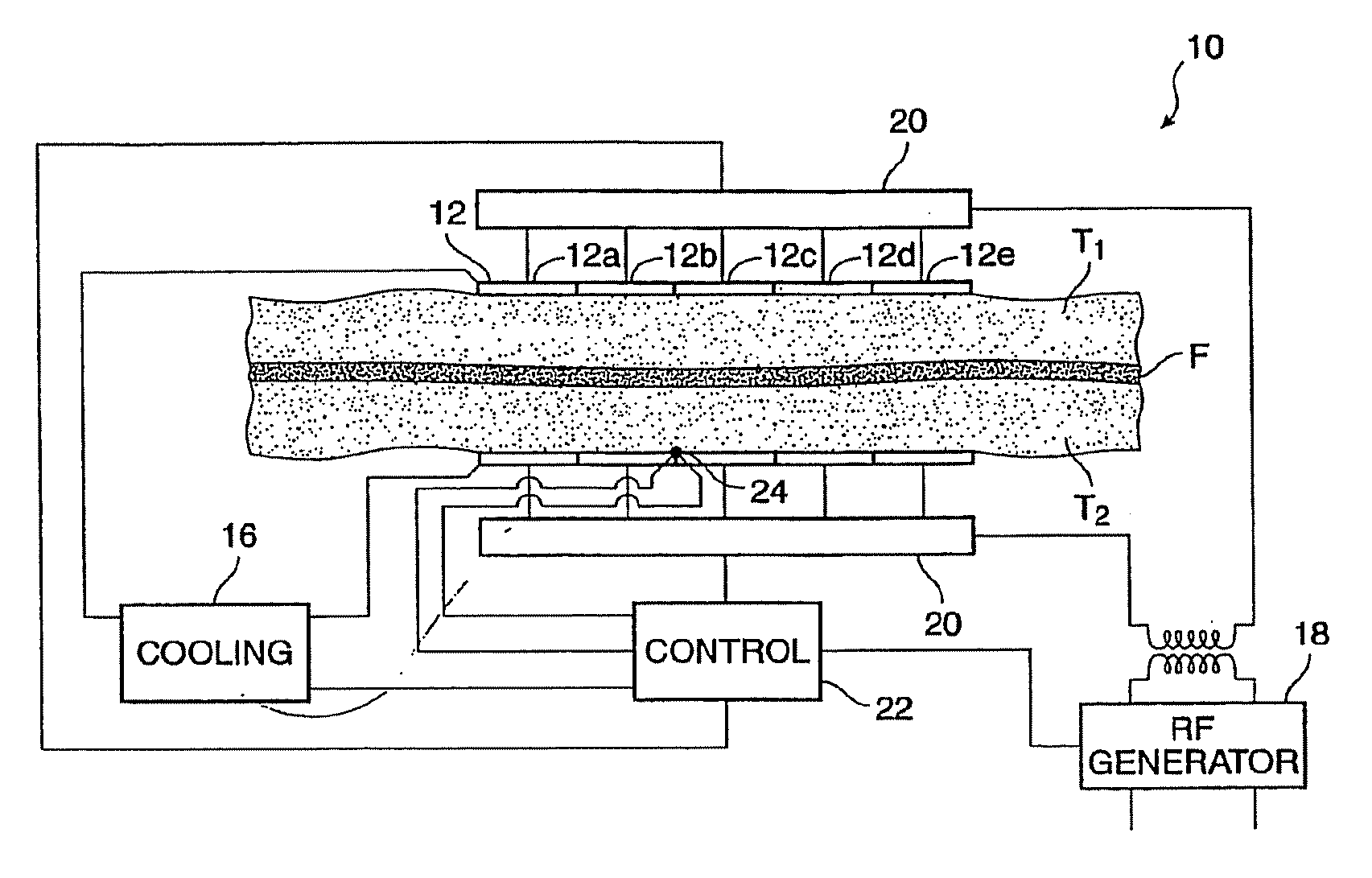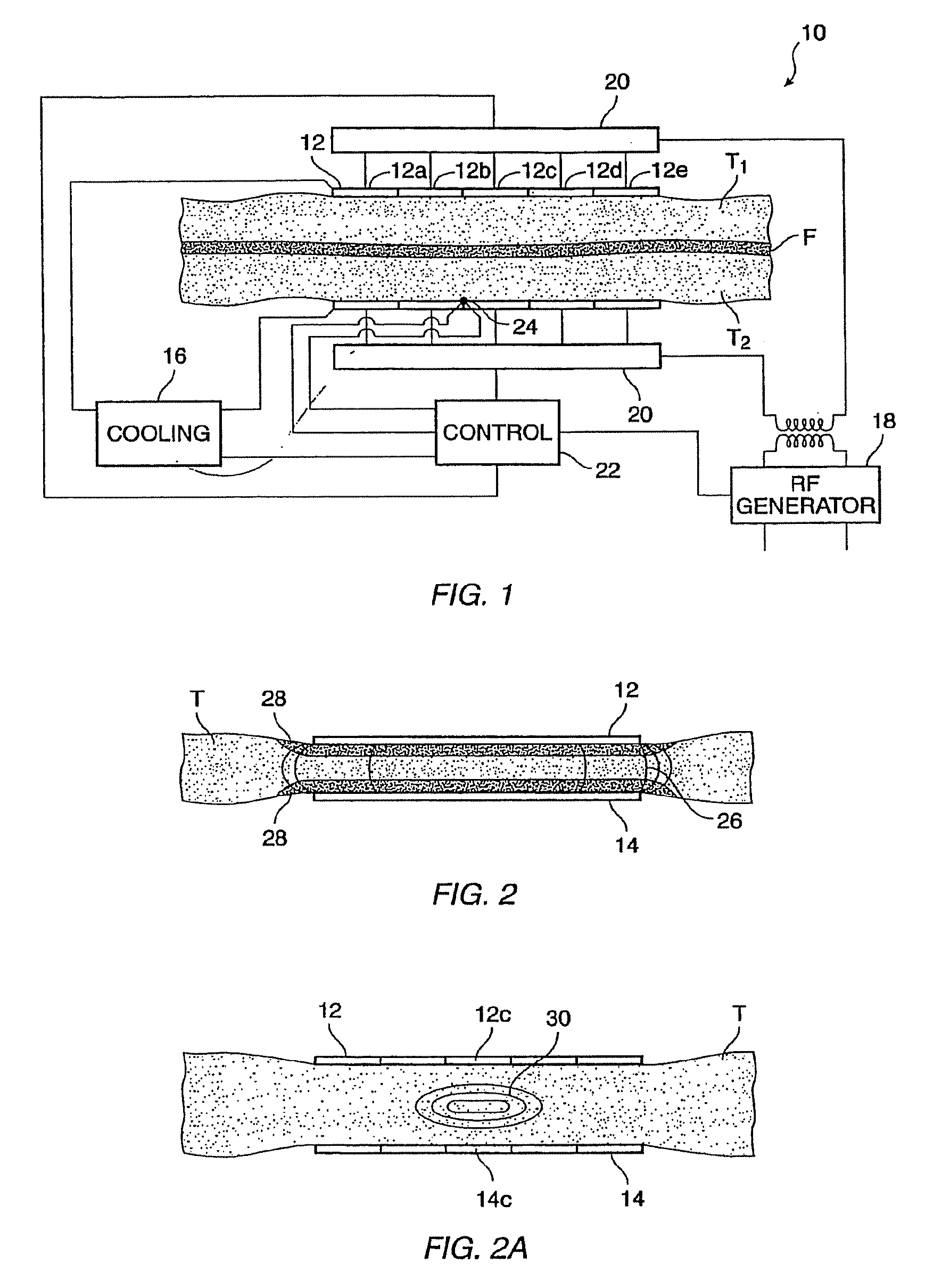Noninvasive devices, methods, and systems for shrinking of tissues
a tissue and non-invasive technology, applied in the field of medical devices, methods and systems, can solve the problems of tissue shrinkage to some degree, and achieve the effects of preventing thermal damage, preventing collateral thermal damage, and limiting the amount of electromagnetic energy
- Summary
- Abstract
- Description
- Claims
- Application Information
AI Technical Summary
Benefits of technology
Problems solved by technology
Method used
Image
Examples
Embodiment Construction
[0079]In general, the present invention relies on heating tissue to treat urinary incontinence. The present invention optionally relies on inducing controlled shrinkage or contraction of a support tissue of the body, typically being a collagenated tissue such as fascia, ligament, or the like. For treatment of urinary incontinence, the tissue structure will be one that is responsible in some manner for control of urination, or for supporting such a tissue. Exemplary tissue structures include the urethral wall, the bladder neck, the bladder, the urethra, bladder suspension ligaments, the sphincter, pelvic ligaments, pelvic floor muscles, fascia, and the like. Treatment of other conditions may be effected by selective shrinking of a wide variety of other tissues, including (but not limited to) the diaphragm, the abdominal wall, the breast supporting ligaments, the fascia and ligaments of the joints, the collagenated tissues of the skin, and the like. Related devices, methods, and syste...
PUM
 Login to View More
Login to View More Abstract
Description
Claims
Application Information
 Login to View More
Login to View More - R&D
- Intellectual Property
- Life Sciences
- Materials
- Tech Scout
- Unparalleled Data Quality
- Higher Quality Content
- 60% Fewer Hallucinations
Browse by: Latest US Patents, China's latest patents, Technical Efficacy Thesaurus, Application Domain, Technology Topic, Popular Technical Reports.
© 2025 PatSnap. All rights reserved.Legal|Privacy policy|Modern Slavery Act Transparency Statement|Sitemap|About US| Contact US: help@patsnap.com



